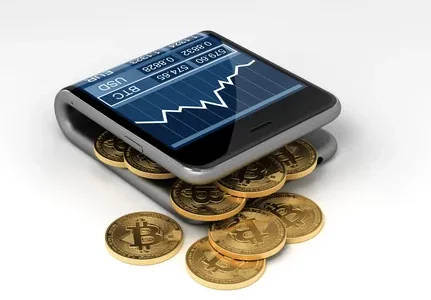To invest in Bitcoin or other digital currencies, you first need a cryptocurrency wallet to store your assets. You have the option of “cold” wallets stored on devices not connected to the internet, and “hot” wallets that are kept on your computer or phone.
Crypto wallets store the information you need to verify your ownership of digital assets. This includes your public and private keys, which are like a crypto world username and password that can authorize transactions.
Do you need your own crypto wallet?
Some investors opt to manage their own digital wallets, but many platforms offer custodial storage options as well. With custodial storage, the platform will store your assets in a wallet they maintain. Some of these crypto storage options pay interest or rewards on assets kept on their platform.
Non-custodial wallets might be more beneficial for experienced users because you have control over your login credentials. With custodial wallets, recovery methods are in place in case you happen to lose access to your account.
On the contrary, crypto exchanges face their own security dangers. They’re often attractive to hackers because of the worth they hold.
How do crypto wallets work?
A crypto “wallet” isn’t a wallet in the traditional sense; instead of holding cash and cards, it stores the data that allows users to view and access funds that move through a blockchain. Every wallet has a private and public key, cryptographically generated strings of letters and numbers.
Key components of a wallet include:
A public key is used to send cryptocurrency funds to a wallet and can be seen by anyone on the blockchain.
The private key is a code known only to you that verifies your transactions. Wallets store this key in their software, so you don’t have to enter it manually each time.
A set of 12-24 words that can help you regain access to your wallet in case you lose it.
You may need a password to open your wallet, similar to the password you would use for any other type of computer service, such as an email client.
Hot and cold wallets store your crypto information differently.
If you want to send cryptocurrency from one digital wallet to another, you will first need to enter the other person’s public key into your wallet. After that, simply press “send.” Your wallet will automatically “sign” the transaction using your private key.
Please make sure you enter the public key of the person you’re sending money to correctly; if not, those funds cannot be recovered.
Hot wallets
Hot wallets are software programs on internet-connected devices that not only store Bitcoin or cryptocurrency, but can also connect to blockchain applications.
While hot wallets are easier to access than cold wallets, they might not be as secure since hackers have a better chance of breaching them.
Custodial hot wallets
For those who are starting out or prefer not to be invasive in the management of their wallets, custodial wallets that are managed by software providers offer a great solution. These types of users can store their funds directly onto an exchange where transactions such as buying and selling can take place. Some exchanges that have received high ratings from NerdWallet include Gemini, Crypto.com and Coinbase.
Non-custodial hot wallets
Online wallets that are controlled by the wallet’s owner make it easier to conduct transactions but users must be responsible for their own keys. Some online wallets offer extra services, like trading or staking, in exchange for fees. MetaMask, TrustWallet and Exodus are three of the most popular hot wallets; each one has a mobile app counterpart for ease of use.
Cold wallets
Cold wallets are hardware-based storage options that keep your private keys offline. While a piece of paper with your key written on it technically qualifies as a cold wallet, the term typically refers to special devices that plug into USB ports.
Although it may be tempting to store your keys in an old-fashioned way, hardware wallets use technology that makes accessing, moving, and backing up your crypto assets much easier. Cold wallets can’t be accessed online; however, they are significantly more secure since they require security measures such as a safe to keep them from getting damaged, lost or stolen.
Some of the most popular hardware wallets that are available on the market today include Safepal, Trezor and Ledger devices; these can be purchased online or directly from companies. The prices for these products range from as low as $49.99 to upwards of $255.
For both security and convenience, you can use two types of wallets: an online wallet for easy-access funds to trade and earn interest, and an offline wallet for more significant investments that you want to keep safe.
Conclusion
- To buy, sell or trade Bitcoin and other cryptocurrencies, you need a crypto wallet to store your digital cash. Your choices include “cold” wallets on devices that are not connected to the internet and “hot” wallets kept on your computer or phone.
- Crypto wallets safeguard the information you need to show proof of your funds. They store your public and private keys, the crypto world’s version of a username and password that can authorize transactions.
- Not every investor needs their own wallet – many platforms offer “custodial wallets,” in which they will store digital assets in a secure location. Some of these storage options pay crypto interest or rewards on assets kept on their platform..
- Custodial wallets can be helpful for beginners because they provide recovery methods in case you lose your login credentials; however non-custodial investors are at risk if they forget login information or get hacked.. Exchanges have their own security risks as well – they can be enticing targets for hackers because of the amount of value held within them..


